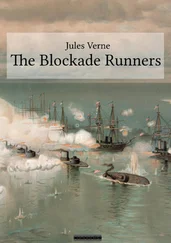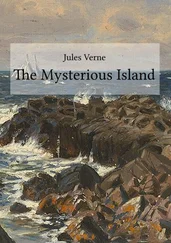We walked in single file, headed by the hunter, who ascended by narrow tracks, where two could not have gone abreast. There was therefore no room for conversation.
After we had passed the basaltic wall of the fiord of Stapi we passed over a vegetable fibrous peat bog, left from the ancient vegetation of this peninsula. The vast quantity of this unworked fuel would be sufficient to warm the whole population of Iceland for a century; this vast turbary measured in certain ravines had in many places a depth of seventy feet, and presented layers of carbonized remains of vegetation alternating with thinner layers of tufaceous pumice.
As a true nephew of the Professor Liedenbrock, and in spite of my dismal prospects, I could not help observing with interest the mineralogical curiosities which lay about me as in a vast museum, and I constructed for myself a complete geological account of Iceland.
This most curious island has evidently been projected from the bottom of the sea at a comparatively recent date. Possibly, it may still be subject to gradual elevation. If this is the case, its origin may well be attributed to subterranean fires. Therefore, in this case, the theory of Sir Humphry Davy, Saknussemm’s document, and my uncle’s theories would all go off in smoke. This hypothesis led me to examine with more attention the appearance of the surface, and I soon arrived at a conclusion as to the nature of the forces which presided at its birth.
Iceland, which is entirely devoid of alluvial soil, is wholly composed of volcanic tufa, that is to say, an agglomeration of porous rocks and stones. Before the volcanoes broke out it consisted of trap rocks slowly upraised to the level of the sea by the action of central forces. The internal fires had not yet forced their way through.
But at a later period a wide chasm formed diagonally from southwest to northeast, through which was gradually forced out the trachyte which was to form a mountain chain. No violence accompanied this change; the matter thrown out was in vast quantities, and the liquid material oozing out from the abysses of the earth slowly spread in extensive plains or in hillocky masses. To this period belong the felspar, syenites, and porphyries.
But with the help of this outflow the thickness of the crust of the island increased materially, and therefore also its powers of resistance. It may easily be conceived what vast quantities of elastic gases, what masses of molten matter accumulated beneath its solid surface whilst no exit was practicable after the cooling of the trachytic crust. Therefore a time would come when the elastic and explosive forces of the imprisoned gases would upheave this ponderous cover and drive out for themselves openings through tall chimneys. Hence then the volcano would distend and lift up the crust, and then burst through a crater suddenly formed at the summit or thinnest part of the volcano.
To the eruption succeeded other volcanic phenomena. Through the outlets now made first escaped the ejected basalt of which the plain we had just left presented such marvellous specimens. We were moving over grey rocks of dense and massive formation, which in cooling had formed into hexagonal prisms. Everywhere around us we saw truncated cones, formerly so many fiery mouths.
After the exhaustion of the basalt, the volcano, the power of which grew by the extinction of the lesser craters, supplied an egress to lava, ashes, and scoriae, of which I could see lengthened screes streaming down the sides of the mountain like flowing hair.
Such was the succession of phenomena which produced Iceland, all arising from the action of internal fire; and to suppose that the mass within did not still exist in a state of liquid incandescence was absurd; and nothing could surpass the absurdity of fancying that it was possible to reach the earth’s centre.
So I felt a little comforted as we advanced to the assault of Snæfell.
The way was growing more and more arduous, the ascent steeper and steeper; the loose fragments of rock trembled beneath us, and the utmost care was needed to avoid dangerous falls.
Hans went on as quietly as if he were on level ground; sometimes he disappeared altogether behind the huge blocks, then a shrill whistle would direct us on our way to him. Sometimes he would halt, pick up a few bits of stone, build them up into a recognisable form, and thus made landmarks to guide us in our way back. A very wise precaution in itself, but, as things turned out, quite useless.
Three hours’ fatiguing march had only brought us to the base of the mountain. There Hans bid us come to a halt, and a hasty breakfast was served out. My uncle swallowed two mouthfuls at a time to get on faster. But, whether he liked it or not, this was a rest as well as a breakfast hour and he had to wait till it pleased our guide to move on, which came to pass in an hour. The three Icelanders, just as taciturn as their comrade the hunted, never spoke, and ate their breakfasts in silence.
We were now beginning to scale the steep sides of Snæfell. Its snowy summit, by an optical illusion not unfrequent in mountains, seemed close to us, and yet how many weary hours it took to reach it! The stones, adhering by no soil or fibrous roots of vegetation, rolled away from under our feet, and rushed down the precipice below with the swiftness of an avalanche.
At some places the flanks of the mountain formed an angle with the horizon of at least 36 degrees; it was impossible to climb them, and these stony cliffs had to be tacked round, not without great difficulty. Then we helped each other with our sticks.
I must admit that my uncle kept as close to me as he could; he never lost sight of me, and in many straits his arm furnished me with a powerful support. He himself seemed to possess an instinct for equilibrium, for he never stumbled. The Icelanders, though burdened with our loads, climbed with the agility of mountaineers.
To judge by the distant appearance of the summit of Snæfell, it would have seemed too steep to ascend on our side. Fortunately, after an hour of fatigue and athletic exercises, in the midst of the vast surface of snow presented by the hollow between the two peaks, a kind of staircase appeared unexpectedly which greatly facilitated our ascent. It was formed by one of those torrents of stones flung up by the eruptions, called ‘sting’ by the Icelanders. If this torrent had not been arrested in its fall by the formation of the sides of the mountain, it would have gone on to the sea and formed more islands.
Such as it was, it did us good service. The steepness increased, but these stone steps allowed us to rise with facility, and even with such rapidity that, having rested for a moment while my companions continued their ascent, I perceived them already reduced by distance to microscopic dimensions.
At seven we had ascended the two thousand steps of this grand staircase, and we had attained a bulge in the mountain, a kind of bed on which rested the cone proper of the crater.
Three thousand two hundred feet below us stretched the sea. We had passed the limit of perpetual snow, which, on account of the moisture of the climate, is at a greater elevation in Iceland than the high latitude would give reason to suppose. The cold was excessively keen. The wind was blowing violently. I was exhausted. The Professor saw that my limbs were refusing to perform their office, and in spite of his impatience he decided on stopping. He therefore spoke to the hunter, who shook his head, saying:
“_Ofvanför._”
“It seems we must go higher,” said my uncle.
Then he asked Hans for his reason.
“ Mistour, ” replied the guide.
“ Ja Mistour, ” said one of the Icelanders in a tone of alarm.
“What does that word mean?” I asked uneasily.
Читать дальше












